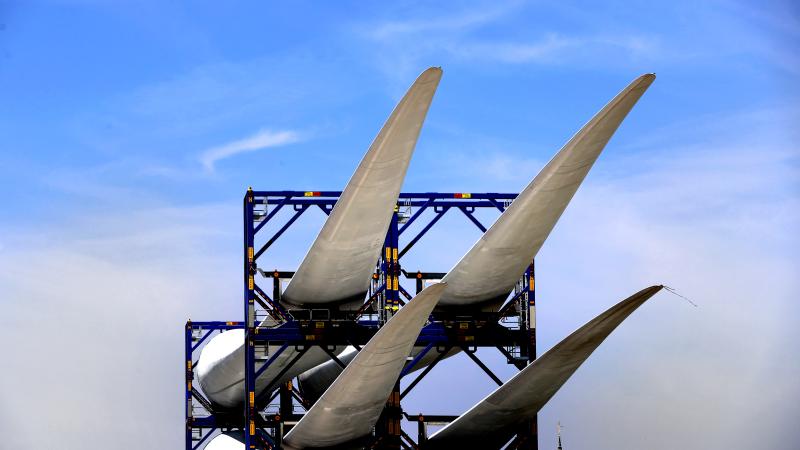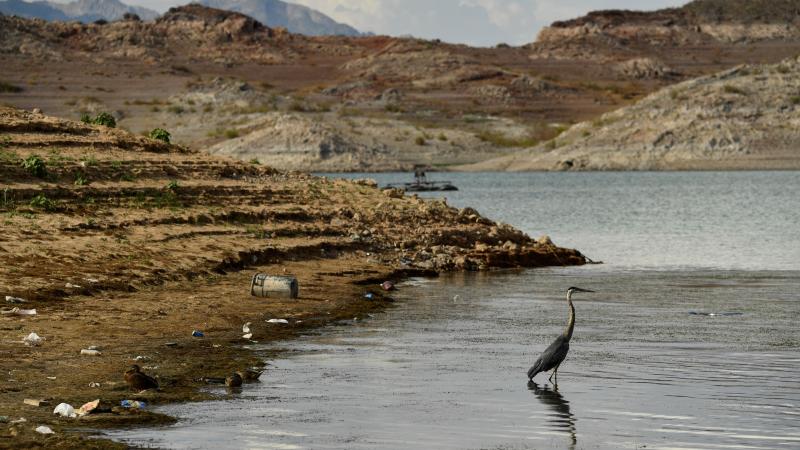Utilities ask customers to conserve energy during winter cold snap, exposing more grid concerns
Texas wasn’t alone in its calls for people to conserve energy. Utilities in the Pacific Northwest faced energy shortages as a result of the cold snap, as did utilities in Minnesota. As the cold encompasses the Southeast, the TVA is also asking its customers to reduce their energy use.
During the past week’s cold weather, utilities across the country asked customers to reduce their energy consumption to avoid blackouts. While inclement weather has always harmed infrastructure and led to power outages, energy experts say the problem of running out of electricity is something more recent.
The Electric Reliability Council of Texas (ERCOT), which oversees the state’s electricity grid, issued warnings Monday that Texans should limit their electricity use between 6 a.m. and 9 a.m. Central Standard Time Tuesday.
“This morning, ERCOT avoided emergency operations due to the conservation efforts by Texas residents and businesses, combined with additional grid reliability tools,” the company stated in an announcement. The company had issued the same conservation warning on Sunday.
Texas wasn’t alone in its calls for people to conserve energy. Utilities in the Pacific Northwest faced energy shortages as a result of the cold snap, as did utilities in Minnesota. As the chill descends on the Southeast, the Tennessee Valley Authority is asking its customers to reduce their energy use.
Stressed grid
David Blackmon, energy analyst who publishes “Energy Absurdities,” told Just The News he blames the problem on increasing reliance on wind and solar. Weather has always brought down electric lines and caused disruptions in electricity service, but Blackmon said these problems with electricity supply are something new.
“I lived in Texas my whole life. We never had any reliability issues in our power grid in the state of Texas until we started piling wind energy into our grid,” Blackmon said. “When you overload the grid like we've done in Texas, your grid manager is going to be in great distress whenever the weather is not ideal.”
According to snapshots of ERCOT’s fuel mix Blackmon posted on “Energy Absurdities,” at 5:49 a.m. Central time Monday, wind was providing 6.5% of Texas’ energy and solar was producing less than 0.1%. Natural gas, coal and nuclear energy were providing 93.2% of the state’s power.
On Tuesday at just after 7 a.m. Central time, wind was up to 12.5% of ERCOT’s electricity supply, and natural gas, coal and nuclear energy provided 86.5%.
“Well, here we go again, sitting in our living rooms in sweaters with our thermostats turned down to 66 degrees,” Blackmon wrote Tuesday.
Winter Storm Uri
In February 2021, Winter Storm Uri led to widespread blackouts in Texas, and 69% of Texans lost power at some point during the event, which contributed to over 200 deaths.
During the storm, natural gas was a key part of the state’s energy mix, but a lack of investment in weatherization led to widespread failures of gas facilities. In response, the state adopted rules to ensure the facilities wouldn’t be shut down in extreme cold events.
Blackmon said he was without power at his home for four days during Uri.
“ERCOT blacked us out, and fortunately, my children live nearby, and their lights were kept on. So we weren’t really in danger,” Blackmon said.
Across the country, utilities have replaced much of their coal-fired electricity generation with natural gas, which has resulted in lower carbon dioxide emissions. However, natural gas is also used in many states as a primary heating source.
In Texas, 34.2% of households use natural gas for heating, and 61.5% use electricity. During cold weather, besides the increased demand for electricity, there is an increased demand for natural gas to heat homes. This means natural gas supplies get diverted from electricity generation, leading to increased risk of blackouts.
It also leads to price spikes. Ahead of the cold snap this past week, natural gas prices jumped 400% in Texas.
Coal power
Travis Deti, executive director of the Wyoming Mining Association, told Just The News that when it comes to keeping electricity going during cold snaps, coal is much more reliable. Texas cut its use of coal by 36% between 2012 and 2021, which has made it much more reliant on natural gas.
“Back in the old days, the weather happened, just like it happens today. But we were having this conversation about where we’re gonna get our power and whether we have to weatherproof our natural gas plants,” Deti said.
Wyoming produces 41.2% of the coal produced in the U.S., almost all of which is the thermal coal used in electricity generation. Because coal is abundant and easy to produce and transport, Deti said, its price remains fairly stable. “When those gas prices go up, coal remains competitive. It’s the low cost, reliable option,” Deti said.
While coal-fired facilities keep about a week’s worth of coal stockpiled, he said that it’s possible to transfer coal from a mine to a power plant by train in about 24 hours. “Coal has powered this country until recently, and it’s concerning that we move away from a reliable, abundant, affordable power source for political reasons,” Deti added.
The Facts Inside Our Reporter's Notebook
Links
- past week’s cold weather
- company stated in an announcement
- same conservation warning on Sunday
- Pacific Northwest faced energy shortages
- as did utilities in Minnesota
- Tennessee Valley Authority is asking its customers to reduce their energy use
- Energy Absurdities
- snapshots of ERCOT's fuel mix
- wind was up to 12.5%
- contributed to over 200 deaths
- state adopted rules
- utilities have replaced much of their coal-fired electricity generation with natural gas
- households use natural gas for heating
- leading to increased risk of blackouts
- natural gas prices jumped 400% in Texas
- cut its use of coal by 36% between 2012 and 2021
















